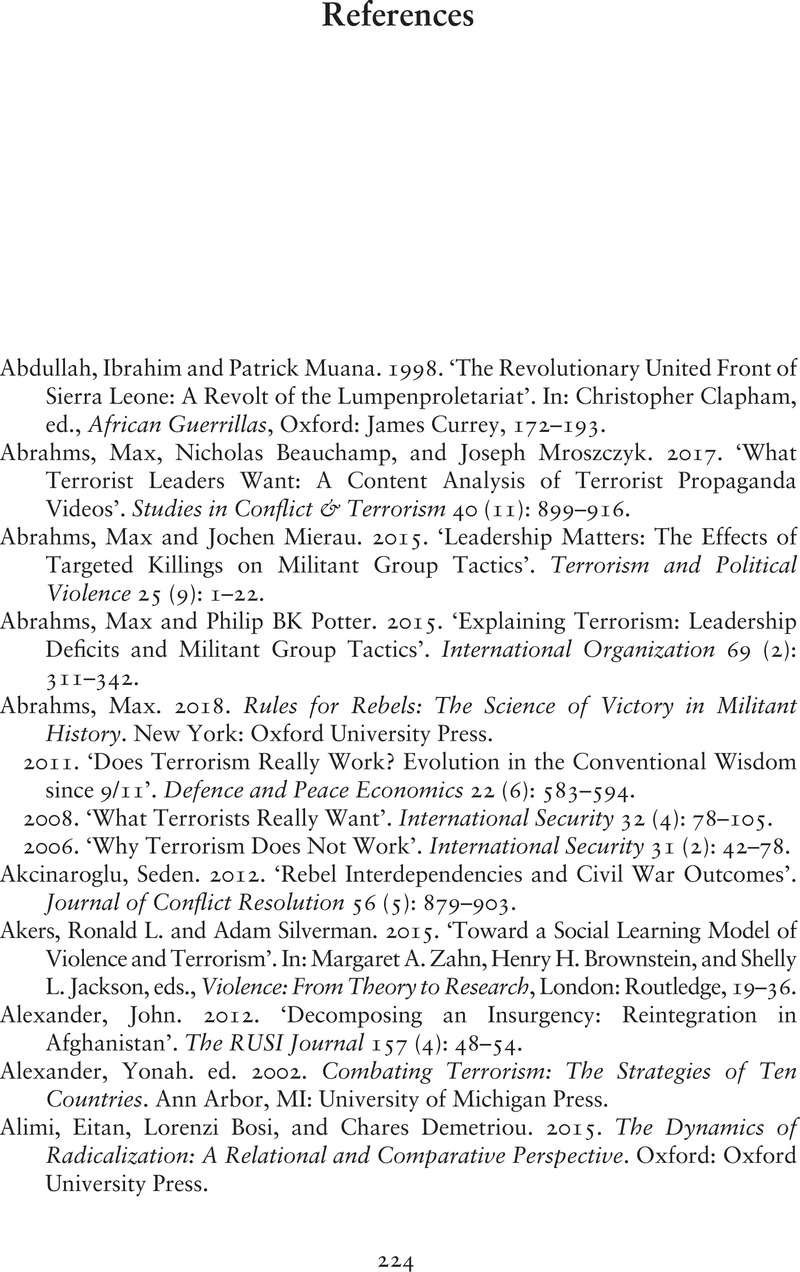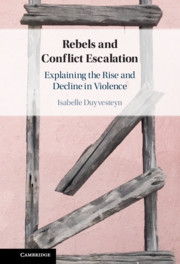Book contents
- Rebels and Conflict Escalation
- Rebels and Conflict Escalation
- Copyright page
- Dedication
- Contents
- Tables
- Vignettes
- Preface and Acknowledgements
- Abbreviations
- 1 Rebels and Escalation
- 2 Escalation and De-Escalation
- 3 Political Opportunity and Rebel Violence
- 4 Political Will
- 5 Capabilities
- 6 Capabilities
- 7 Political Will
- 8 Legitimacy and Support
- 9 De-Escalation
- 10 The Escalation and De-Escalation of Rebel Violence
- References
- Index
- References
References
Published online by Cambridge University Press: 01 July 2021
- Rebels and Conflict Escalation
- Rebels and Conflict Escalation
- Copyright page
- Dedication
- Contents
- Tables
- Vignettes
- Preface and Acknowledgements
- Abbreviations
- 1 Rebels and Escalation
- 2 Escalation and De-Escalation
- 3 Political Opportunity and Rebel Violence
- 4 Political Will
- 5 Capabilities
- 6 Capabilities
- 7 Political Will
- 8 Legitimacy and Support
- 9 De-Escalation
- 10 The Escalation and De-Escalation of Rebel Violence
- References
- Index
- References
Summary

- Type
- Chapter
- Information
- Rebels and Conflict EscalationExplaining the Rise and Decline in Violence, pp. 224 - 256Publisher: Cambridge University PressPrint publication year: 2021



